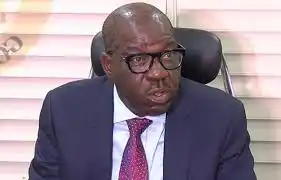IN every growing city, there is the inevitable prospect of an increase in both human and vehicular traffic. If efficient and proactive traffic management systems aren’t put in place, the growing population faces a nightmare stuck in traffic. More so, several man hours are lost waiting in traffic gridlocks.
In a city like Lagos, despite the construction of several bridges, traffic gridlocks still remain perpetual. This is a testament that traffic gridlocks are not just controlled with infrastructure alone but with a melange of well thought-out collaborative efforts.
For a State like Edo, which is blessed with several link roads, expensive bridges might not be the go-to strategy at first instance to dealing with traffic, especially when the country is experiencing an economic downturn. It necessitates, therefore, the ideation of smarter ways to deal with such traffic menace while also ensuring funds are available to pay salaries of workers and emoluments for pensioners at a time when many states still grapple with such. Let’s highlight how the Governor of Edo State, His Excellency, Mr Godwin Obaseki has done this.
Governor Obaseki’s approach to traffic management is two-pronged: First is the infrastructural-development approach and the second is the traffic-personnel development approach.
The first approach features the construction of as many quality Trunk B and link roads as possible which can in turn serve as detour routes. Some of these important link roads include: Textile Mill Road that takes traffic away from Benin-Lagos Road as well as Siluko Road; TV/Ehaekpen Road which takes traffic away from New Lagos Road and Ekenwan Road; and Irhirhi-Aruogba-Ogheghe-Obazagbon Roads which takes traffic away from Sapele Road and Airport Road.
These roads have been constructed with road markings that instruct drivers of where to turn. In addition, they are built with kerbs, culverts, drainages, and pedestrian walkways. Pedestrian bridges like that in the University of Benin have been built to take care of pedestrian traffic. His administration has also invested in the installation of street lights to enable nighttime driving. This is very critical in reducing traffic especially because it takes heavy-duty trucks and articulated vehicles off the roads at daytime. As Edo is a gateway to various parts of Nigeria, the investment in street lights is a masterstroke. The Governor has also invested in the installation of new traffic lights as well as replacement of faulty traffic lights at various stops.
Next, Governor Obaseki purchased more than 90 mass transit buses with the realization that a single mass transit bus is capable of taking more than 10 vehicles off the road. Mass-transit or public transportation system remains the best method of reducing traffic and explains why developed countries continues to invest in it massively. It is a fact therefore that one of the measure of success of a society lies in the efficiency of its public transportation system. Note that deployment of light rail systems, trams and others in Nigeria is still very capital-intensive.
The governor has also brought about the affixing of bus stop signs at various roads which designates appropriate spots for vehicles to pick up or drop off passengers. This prevents the haphazard system which was obtainable in previous administrations were bus drivers and other commercial vehicles drop off/ pick up passengers at unauthorised places including the middle of the road. The Governor has gone a step further by building a Central Park where various commercial vehicles plying various routes can pick up or drop off passengers. Four more are underway across the State. For private vehicles, there is also two newly constructed parks in the King Square axis.
For the second approach which deals with emplacing an efficient traffic personnel, the Governor has ensured the retooling and retraining of the State’s traffic personnel. The duty of the traffic personnel is to ensure the smooth flow of traffic and are domiciled in the Edo State Traffic Management Agency (EDSTMA). EDSTMA has been repositioned by Governor Obaseki with a world-class training institute along Sapele Road with high-end gadgets that teach the personnel how to efficiently deal with intricate traffic situations. Towing vehicles too have been made available to remove vehicles that break down along the roads as this has been touted as one of the reasons for gridlocks.
The EDSTMA reform of 2017 also saw the recruitment of very courteous and respectful traffic management workers totaling over 700. Also, recently instituted is the erring drivers correctional models which includes psychological tests and evaluations. Erring drivers carryout community service when they go to trial and are convicted. The agency also have accident and rescue management teams, first aid equipments, motor bikers and driving simulators. Needless to say that their offices are fully air-conditioned with 24/7 Electric Power Supply as is the policy of the Governor to provide befitting Offices for all workers in the State.
EDSTMA operations have recently been extended to cover other Senatorial districts like Edo North and Edo Central with Auchi, Uromi and Ekpoma offices being birthed.
With the above achievements of the Governor, we can safely say the Governor has invested smartly in the management of the State’s traffic situation. We dare to say it will be one of his long lasting legacies.
Ikponmwosa Osamede (Ik Osamede) writes from Egor in Benin City


